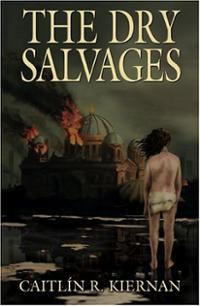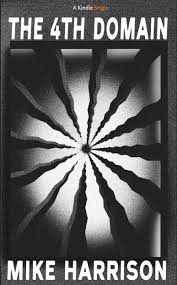I’ve seen a lot of people posting their best-loved Hallowe’en reads this week, so I thought I’d share my thoughts on a few of my own.
1) Peter Straub – Ghost Story.
A modern classic, and rightly so. Straub’s stories are always complex, lush with detail, and multi-layered. You’re already deep into the story before you fully realise what’s going on, that wandering-in-the-forest feeling epitomises everything a Hallowe’en read should be. Anyone who lists slasher movies or serial killer thrillers among their Hallowe’en favourites is missing the point. Hallowe’en – All Hallows Eve – is the night when spirits traditionally walk abroad. This is a time for exploring spirituality – both of the dark side and the light – for coming to terms with hard truths, for delving into the secrets of the past and perhaps uncovering something less than pleasant in the process. For the four ageing members of Straub’s Chowder Society in Ghost Story, this is a time of facing up to the consequences of their past actions – big style. I adore this book. I adore Straub’s erudite, meandering and occasionally obscure style. I’m also very fond of John Irvin’s 1981 film based on Ghost Story which, though it cannot hope to convey all the subtleties of the original novel, seems to me to be the epitome of what a great Hallowe’en movie should be: quiet, reflective, mysterious and chilling at the core.
2) Helen Oyeyemi – White is for Witching
One of my very favourite ghost stories of recent years, this short novel plays out big issues on an intimate stage. Its evocation of a particular milieu – the English seaside town – is perfectly executed, its portrayal of relationships, the closeness and distance between people, is razor sharp in its accuracy and pathos. White is for Witching is equally a tense family drama and a forthright examination of the divisions within contemporary British society. I read this in a single sitting. Haunting and masterful.
3) Joyce Carol Oates – Bellefleur
Ah, Bellefleur! This is sumptuous, gorgeous, genius, the vampire novel that dare not speak its name. The language, the irony, the beauty, the madness, the STORY! Oates’s intuitive understanding of the gothic is both articulate and sublime. For those who don’t have time to sink themselves into a 600-page epic just now, try the stories in Haunted instead. This exemplary collection was my first introduction to Oates and she’s been right there at the centre of my personal pantheon ever since.
4) Ramsey Campbell – The House on Nazareth Hill
I honestly do think this could be the perfect Hallowe’en read. It’s a haunted house story, basically, and as my first encounter with Ramsey Campbell’s fiction I’ll never forget the impact it made on me. I couldn’t put it down, and kept reading it far later into the night than I should have done. The central character, Amy, remains with me still as a powerful presence. And that inner room with no windows – brrrrr!
5) Clive Barker – The Books of Blood
Seminal works in the field of British horror literature, Clive Barker’s two collections of stories contain everything from ghosts to monsters to ur-beasts to mad obsessives in the best Dr Frankenstein tradition. Particular favourites among the stories include ‘The Forbidden’, ‘In the Hills, the Cities’, ‘The Skins of the Fathers’, ‘Son of Celluloid’ and how could I forget ‘Rawhead Rex’?? But by far the best way of reading The Books of Blood is to start at Book 1 and read the whole lot through chronologically. Although the stories aren’t linked as such, their cumulative effect is considerable and their overall ethos is such that they demand the concentrated reading you might lavish on a novel. The Books of Blood were groundbreaking in their time and they have lost none of their power. Anyone – and I mean anyone – interested in writing horror fiction should and must read these stories.
And what will I be watching tomorrow evening? The Haunting (Wise’s 1963 version) is perhaps the quintessential Hallowe’en entertainment, and is pretty faithful to the original Shirley Jackson masterpiece into the bargain. If it’s atmospheric ghost stories you’re into then Amenabar’s The Others is pretty good, too. I have a crazy, perfect love for the 1993 portmanteau film Necronomicon, the third segment of which scared me so badly the first time I saw it that I couldn’t sleep for a weekend (I tried it out on some friends a few months later – they were not amused, and I ended up having to bring a duvet downstairs for them all to hide under). My favourite film adaptation of Dracula is still the Coppola, no matter what anyone says. And for a dose of sheer Hallowe’en madness – with flying head-drillers and trans-dimensional dwarfs – what about Don Coscarelli’s Phantasm?
On balance though, I think tomorrow evening might be the perfect time to revisit a little-remarked-on but for me unforgettable adaptation of Mary Shelley’s Frankenstein. Released as a TV movie in 1973 and starring James Mason as Polidori and David McCallum as Victor Frankenstein, Frankenstein – the True Story is lush and overlong and over-the-top and with enough of the earnestness and passion of the original story to make it compelling. I first saw this in 1974, on the night ABBA won the Eurovision Song Contest with ‘Waterloo’. My parents were having a Eurovision party downstairs (they were young, they were foolish) and my brother and I were treated to an unlimited supply of Twiglets and the free use of the black-and-white portable TV in their room upstairs. I was nine years old, my brother only seven, so I’m really not sure if Frankenstein was the kind of viewing Mum and Dad had in mind, but we watched it anyway. It seemed to go on for hours, and I was mesmerised throughout. It was many years before I saw it again, but I still remembered whole scenes perfectly and, perhaps because it was one of those so-important early influences, it had lost none of its power for me. Jane Seymour’s night at the ball, Elizabeth in the ice, the final pursuit to the cave. When I saw that Frankenstein – the True Story was to be released on DVD, I pre-ordered it at once. And having talked this out here I’m decided – tomorrow at around 9pm I’m going to unleash the monster from its cellophane wrapping…

